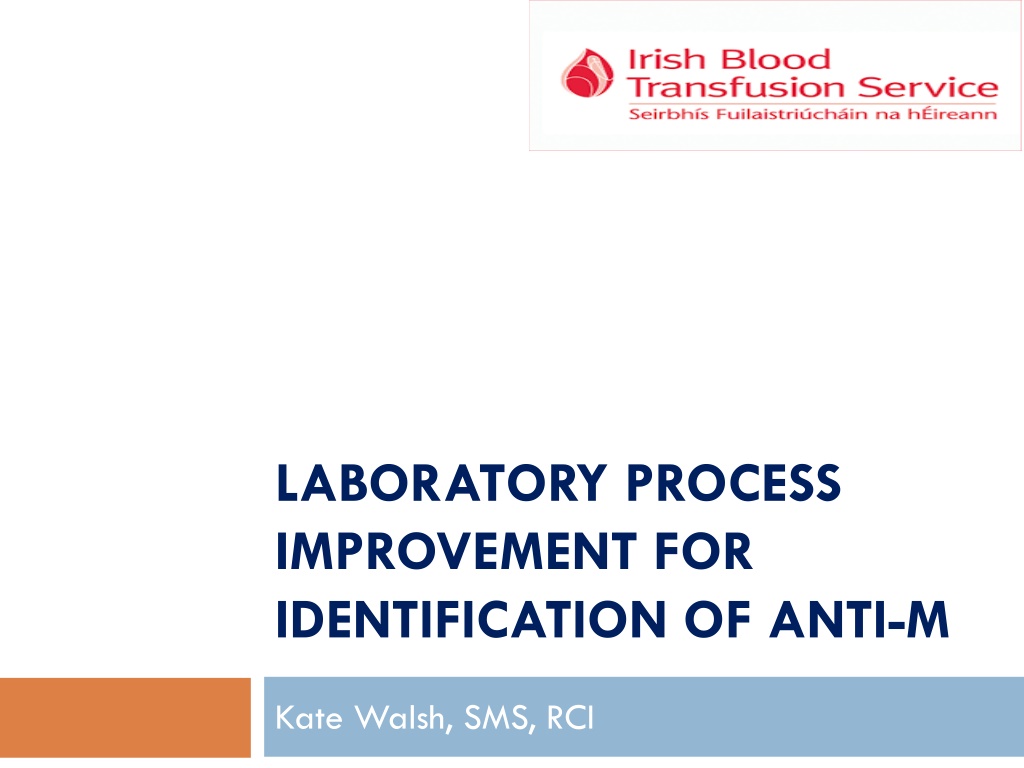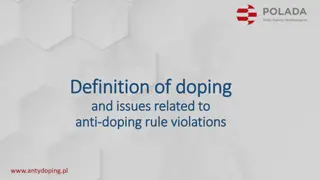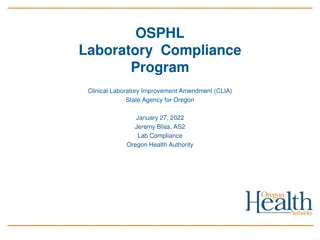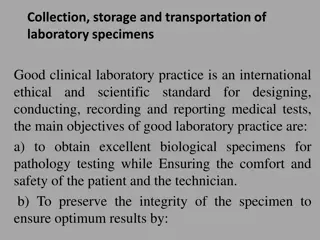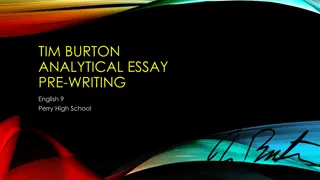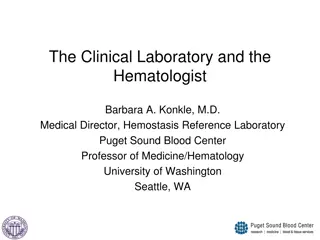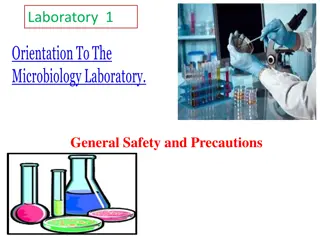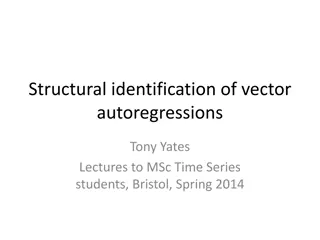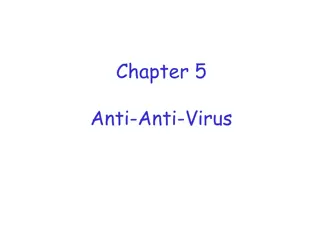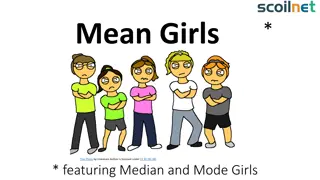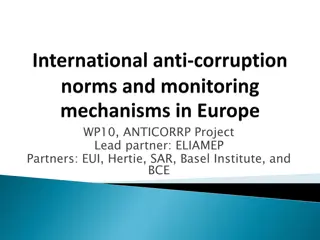Laboratory Process Improvement for Identification of Anti-M by Kate Walsh
This presentation by Kate Walsh focuses on the laboratory process improvement for the identification of Anti-M, discussing the background of Anti-M, current management practices, proposed changes, and results. It delves into the M antigen, prevalence among different ethnicities, and the overview of Anti-M antibodies, highlighting their significance and potential clinical implications. Additionally, it reviews literature studies related to Anti-M, emphasizing the importance of appropriate testing and monitoring in pregnant women to mitigate risks.
Download Presentation

Please find below an Image/Link to download the presentation.
The content on the website is provided AS IS for your information and personal use only. It may not be sold, licensed, or shared on other websites without obtaining consent from the author. Download presentation by click this link. If you encounter any issues during the download, it is possible that the publisher has removed the file from their server.
E N D
Presentation Transcript
LABORATORY PROCESS IMPROVEMENT FOR IDENTIFICATION OF ANTI-M Kate Walsh, SMS, RCI
Overview of presentation Background of Anti-M Interesting Scientific Papers The Anti-M problem! How we currently manage Anti-M in RCI Why review? Proposed changes Results Proposed report
The M Antigen The M antigen is located on the N-terminus of the Glycophorin A glycoprotein.
M Antigen M and N antigens are antithetical in all populations Destroyed by papain, ficin and bromelain treatment Prevalence : Ethnicity Caucasian Indian Black Chinese % presence of M antigen 78 88.8 74 79.7
Anti-M Overview Many examples of Anti-M are naturally occurring . It is a predominantly an IgM antibody with some associated IgG component. Most Anti-M antibodies are not reactive at 37 C and are not considered clinically significant. Anti-M antibodies may exhibit dosage
Anti-M Overview There have been reported cases of IgG Anti-M reacting at 18 C and strong IgM Anti-M reacting at 37 C Anti-M can also be biphasic in nature (Shah, SP et al, 2016) Described as the 2ndmost common non-Rh antibody after Anti-Kell Very occasionally Anti-M implicated in acute and delayed HTRs Anti-M has very rarely been responsible for severe HDFN
Literature Review of Anti-M Stetson B et al., 2017 largest Anti-M study carried out at Ohio University Medical Centre. Between 2000-2016: 195 pregnancies affected by Anti-M alloimmunisation. No known cases of significant HDFN Of the 195 cases; 95 pregnancies with maternal Anti-M and known M positive fetuses/neonates there were no increase in titres during pregnancy. Ethnicity of patient s tested: 73% white, 18% black, 3% asian, 1% hispanic, 4% other Conclusion: unnecessary testing should be minimised in the majority of women with Anti-M while still identifying those at risk.
Anti-M in the Literature Stetson B et al., 2017 Algorithm created following study and literature review: Prenatal sample, titre of 16 or a history of HDFN is recommended to have titres repeated every 4 weeks. If Titre increases to 32, continue to monitor titres. If Increases to 64 recommend MCA Doppler every 2 weeks. Prenatal sample, titre of 8 and no history of HDFN, repeat titre at 28 weeks. If titre 16 and no other antibodies, no further testing required. If titre rises to 32, constitutes rapid rise and recommend MCA Doppler every 2 weeks.
Anti-M in the Literature Hinchcliffe RF et al., 2006 Case of neonatal red cell aplasia due to Anti-M Concluded: M antigen is expressed on immature erythroid precursors and it is plausible that precursor cell growth would be inhibited by Anti-M. A possible case for clinically significant warm reactive Anti-M joining Anti-Kell in categorisation as cause of reticulocytopenic HDFN.
Anti-M in the literature Hiroyasu, Y et al., 2014 Review of Japanese literature in relation to HDFN caused by Anti-M antibodies. Reported 34 cases of mild to fatal HDFN in Japan from 1975- 2012 Most requiring therapeutic intervention. Not comparable to the rare account of Anti-M induced HDFN in the Stetson B et al., 2017. However only 4 patients were Asian! Posited that it s possible genetic markers linked to race affect the immune response to eythrocyte alloantigens.
Anti-M in the literature Hiroyasu, Y et al., 2014 (Japanese) 29 infants with HDFN due to Anti-M reviewed 8/10 infants with severe HDFN had maternal titres of 16 at delivery. Supports the theory that Anti-M may cause anaemia due to both destruction of fetals RBCs and suppression of erythropoesis. Should we consider ETHNICITY when dealing with Anti-M??
Anti-M in the literature 3 papers detailing clinically significant Anti-M antibodies, from 2012, 2014 and 2015- all from India! Gagandeep K et al., 2012 Discussed the potential for falsely identified clinically significant 37 C Anti-M. high-titre high-affinity reacting very strongly at room temperature Misinterpreted Anti-M as the tubes reactants were allowed to cool after centrifugation and prior to reading.
Anti-M in the literature Makroo, RN et al., 2014 84% of Anti-M antibodies were of IgG class, or possessing an IgG component causing reactivity @37 C and thus potentially clinically significant. Determining thermal amplitude of Anti-M 2 papers used: DTT treatment (IgG / IgM) of patient s plasma 1 paper used: 37 C tube technique
Anti-M Serology BSH Guidelines 2015 It is generally understood that cold-reactive (IgM) Anti-Ms are not clinically significant and hence: -Do not require antigen negative blood. Transfusion protocol: Crossmatch compatible RBCs at 37 C Are not capable of entering fetal circulation Not implicated in HDFN.
Here comes the BUT! Determination of genuine warm-reactive, IgG Anti-M Vs cold reactive IgM is TRICKY and an issue for a lot of RCI labs.
The Tricky Factors Reactive by IAT @37 C using gel card technique? Cold reactive antibodies can agglutinate in the gel card when introduced to each other at RT and the incubation at 37 C for 15 mins is insufficient for dissociation. pH of gel cards tend to be slightly acidic and Anti-M/M Ag loves a low pH. M + =
The Tricky Factors Cont. Strict pre-warmed tube IgG technique is very difficult to achieve Anti-M may have a wide thermal amplitude (up to 25 C) and agglutinate in milliseconds at any stage of the method. before set up if not pre-warmed enough In between washes if left for a time At the spin stage as warm centrifuges aren't widely available When reading the tubes via microscope (transition from tube to slide) Over-reading macroscopically due to insufficient dispersion of suspension
How We Test Anti-M in RCI Initial testing on Ortho Vision or BioRad gel technique by IAT and ENZ/IAT Identify Anti-M and exclude all clinically significant antibodies by CAT. Panel performed by strict pre-warmed tube IgG technique. All negative tubes read microscopically as per all tube IAT techniques in RCI. Determine M phenotype status of patient If Anti-M reactive following pre-warmed technique deemed warm-reactive. Protocol: M-units If cold reactive. Protocol: Crossmatch compatible @ 37 C
How We Test Anti-M in RCI All Anti-M samples, new and previous are tested using the pre-warmed method each time. Once identified as clinically significant- antenatal samples are titred on the strength of reaction by Ortho Vision/ BioRad IAT.
Where do we go from here? Introduction of DTT Treatment as standard Treating IgM Abs with 0.01M DTT abolishes agglutination activity to permit detection of co-existing IgG antibodies. Common method used to identify Anti-M with IgG component. Method as per AABB Technical Manual (20th Edition 3-16) Using Sulfhydryl reagents to distinguish IgM from IgG antibodies
Test Results IgM Cell number Pos control Neg control Method 1 2 3 4 5 6 7 8 9 10 11 Neat + + + - + + + + - + - V - Test - - - - - - - - - - - V - Dilution Control + + + - + + + + - + - V -
Test Results IgG (+/- IgM) Cell number Pos control Neg control Method 1 2 3 4 5 6 7 8 9 10 11 Neat + + + - + + + + - + - V - Test + + + - + + + + - + - V - Dilution Control + + + - + + + + - + - V -
Proposed reporting of Anti-M following DTT Current antibody: Anti-M (IgM) Transfusion Protocol: Crossmatch compatible at 37 C Or Current antibody: Anti-M IgG +/- IgM And Titration result (if required) Transfusion protocol: M- Changing patient population in Ireland Should ethnicity be a factor when dealing with antenatal Anti-M antibodies? E.g Indian and Japanese papers
JUST when you thought it was safe. Crispin et al., 2019 (Dec) Cold reacting Anti-M causing delayed HDFN
JUST when you thought it was safe Crispin et al., Patient s second pregnancy, Anti-M detected by direct saline tube @ 4 C, RT and 37 C. 35 weeks gestation titre results: 6 @37 C , 32 @4 C Fetal assessment: Normal Cord blood DAT: positive Eluate: Anti-M and Anti-D (prophylactic) Fetal Hb dropped in the first week, with significant anaemia (63g/L) after discharge. Baby re-admitted for transfusion twice. 4 months old, Hb normalised.
JUST when you thought it was safe Explanations proposed: Anti IgG Anti-M crossed the placenta and caused cold- agglutination. OR IgM Anti-M crossed the placenta. Large IgM structure linked to strong saline agglutination seen with this antibody-BUT also limits the ability to cross the placenta. OR Haemolysis was due to an undetected antibody to low incidence antigen
However the Anti-M wasnt tested using either DTT treatment or pre-warmed tube IgG So it supports the argument that accurately identifying the IgG/IgM status of anti-M is both tricky and clinically important! However, the use of DTT for IgG/ IgM classification is more robust than tube technique.
References Roback, J. (2011). Technical manual. Bethesda, Md.: AABB Makroo R N, Bhatia A, Gupta R, Phillip J. Prevalence of Rh, Duffy, Kell, Kidd & MNSs blood group antigens in the Indian blood donor population. Indian J Med Res 2013;137:521-6 Clarke G, C t J, Lane D. MNS System: Anti-M [Internet]. Ottawa: Canadian Blood Services; 2019 Oct 9 [09-01-2020]. Stetson B, Scrape S, Markham KB. Anti-M Alloimmunization: Management and Outcome at a Single Institution. AJP Rep. 2017;7(4):e205 e210. Tondon R, Kataria R, Chaudhry R. Anti-M: Report of two cases and review of literature. Asian J Transfus Sci. 2008;2(2):81 83. Makroo RN, Arora B, Bhatia A, Chowdhry M, Luka RN. Clinical significance of antibody specificities to M, N and Lewis blood group system . Asian J Transfus Sci 2014;8:96-9
References Yasuda, H & Ohto, H& Nollet, K & Kawabata, Kinuyo & Saito, Shunnichi & Yagi, Yoshihito & Yutaka, Negishi & Ishida, Atsushi. (2013). Hemolytic Disease of the Fetus and Newborn With Late-Onset Anemia due to Anti-M: A Case Report and Review of the Japanese Literature. Transfusion medicine reviews. 28. 10.1016/j.tmrv.2013.10.002. Hinchliffe RF, Nolan B, Vora AJ, Stamps R. Neonatal pure red cell aplasia due to anti-M. Arch Dis Child Fetal Neonatal Ed. 2006;91(6):F467 F468. Philip J, Kushwaha N, Jain N. Report of two cases of anti-M antibody in antenatal patients. Asian J Transfus Sci. 2015;9(1):89 91. Crispin, P., Sliwinski, K., Wilson, C., Lennard, S., DeSouza, M. and Sethna, F. (2019), Cold reacting anti M causing delayed hemolytic disease of the newborn. Transfusion, 59: 3575-3579. Are patients with anti-M being managed appropriately . Presented by J. Crumlish at BBTS, 2014.
